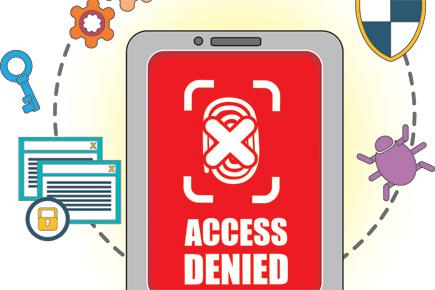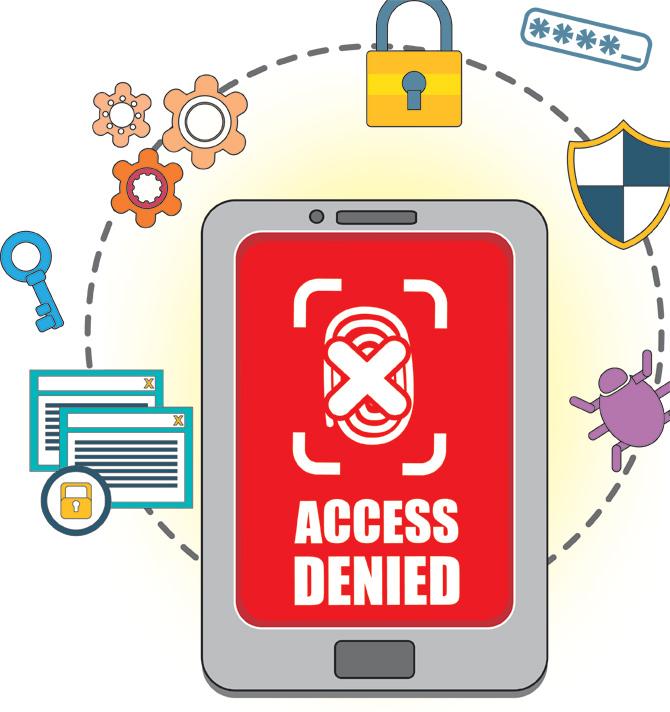Smartphones might have made our lives easier, but they also complicate matters. In the first of a multi-part series, the guide helps you improve your smartphone quotient, starting with privacy and security

Security system
![]() Security
Security
Android OS has its own vulnerabilities that expose it to cyber attackers, data miners and thieves. While we can’t avoid these entirely, the best we can do is build walls around it to make it tougher to breach. Here’s how:
Set up a security lock
Use either a pattern, pin or password (I recommend password) lock to prevent unwanted access to your phone. Finger print-based security locks or face locks sound fancy, but are not fool-proof, and don’t provide extra security.
How to do it?
On your Android phone, go to Settings> Security> select Screen Lock. Choose from Pattern, Pin or Password to setup lock.
Encrypt your phone
If your phone has sensitive data, encryption will help protect it from being copied physically when it’s misplaced or stolen.
How to do it?
Go to Settings>Security in your Android phone and select Encrypt Phone. Ensure your phone’s battery is fully charged and is connected to the charger during the encryption as it may take nearly an hour.
ADVERTISEMENT

Perform routine back-up:
Back-up your phone either on a secure cloud or on your personal computer. This will help in case your phone gets lost or damaged.
How to do it?
Offline: Most smart phones have a built-in back-up tool that allows to back-up all personal data and apps on an external memory card. You can also use My Backup app to back-up your apps and data offline.
Online: You can use the cloud storage services of Dropbox/Google to sync your images, videos and contacts (Google only). As for messages and call logs, try Avast Phone Backup. It uses space in your Google Drive to automatically back-up all messages and call logs. If you are changing phones or have lost it, you will still have access to all messages and call logs.

Use app permissions
Most of us don’t read the permissions an app requires before installing it, but if you do, it will be an eye-opener. For example, several e-commerce apps require permissions to read messages, record audio, and read call logs. Now, how do access to call logs improve your shopping experiences? It doesn’t, but they still want it. This puts your safety, security and privacy at risk. The only way to avoid it is to not use the app. However, with Android Lollipop 5.0 and above, you can use permissions apps to control individual permissions of each app installed on your phone, without rooting it.
How to do it
Most phones with Android Lollipop 5.0 and above now come with App Permission Manager. You can use them to restrict apps from accessing messages and call logs. There are also third- party apps like App Opps available for free download from the Google Play Store.
Turn off installations from unknown sources
An ideal way to stay safe from malware and spyware apps is to use apps only from the Google Play Store. However, disable app installations from third-party app stores and unknown sources to be safe unless you trust the app installer.
How to do it?
Go to Settings>Security and within Device Administration select Verify Apps option. Also, within Device Administration de-select Unknown Sources (it prevents installation of third party apps on your phone).
Privacy
Your privacy is important, and nobody should intrude it. Unfortunately, with Android, it’s often overlooked. For example, as soon as you log in to your Android phone using Google ID, you are logged in simultaneously to all Google apps/services, which are then used to record your online/phone behaviour. Here’s how to keep this under check:
Sign out of Chrome
By default, once you have logged in on your new phone using your Google ID, it will log you in to the Chrome app as well. This makes it easier for Google to track your online behaviour. We recommend signing out from Chrome or any other browser that you may use.
How to do it?
In Chrome, go to Settings (the three vertical dots at the right corner). In Settings, if you don’t see your email ID, you are not logged in. However, if your email ID is listed there, click on it. It will open a new window where you will see a switch button. Press it to sign out of Chrome.
Turn on Do Not Track
By default, in Chrome, websites can track your location, identity and behaviour. However, there’s a Do Not Track option that you can turn on to prevent this.
How to do it?
In Chrome, go to Settings>Privacy and then click on Do Not Track. Turn it on by sliding the switch button. While some websites, may still track you, it’s better than allowing every website to record your behaviour.
Turn off activity recording
By default, Google tracks your search activity on apps and in browsers to offer fast and customised experiences across Google products. But this also means compromising your privacy. You can turn it off by changing preferences in the Google Settings app.
How to do it?
Open Google Settings app. Go to Personal Info & Privacy>Activity Controls> to open the activity dialogue box. It will have options such as Web & App Activity, Voice and Audio Activity, YouTube Search History, YouTube Watch History and Google Location History. Open each of them and de-select to pause the recording of your activity across Google apps and services.
NOTE: Pausing these activities may affect a few features in apps like YouTube, and also prevent Google from offering location based services such as Google Now cards.
Manage apps with access to Google Most apps and services require you to sign in using your Google ID. This gives apps access to your email ID, contacts list, etc. However, even when you un-install these apps, they continue to retain access to your Google account, which is a risk. We recommend that you delete apps that you no longer use.
How to do it?
In your Android phone, open the Google Settings app. Select Sign-In and Security>Connected Apps & Sites. This will open in a browser. Sign in to your Google Account to access the list of apps connected to your account. Click on Manage Apps to see the entire list. Press the apps you no longer use (or do not wish to use) and select Remove to delete them from the account.
How to reset your advertising ID Google stores data about you in a Google Ad ID, which is used to target you with interest-based ads. To opt-out, open Google Settings in your phone. Press Ads, and select Opt-Out of Interest-Based Ads. To reset, press Reset Advertising ID and select OK.
 Subscribe today by clicking the link and stay updated with the latest news!" Click here!
Subscribe today by clicking the link and stay updated with the latest news!" Click here!






